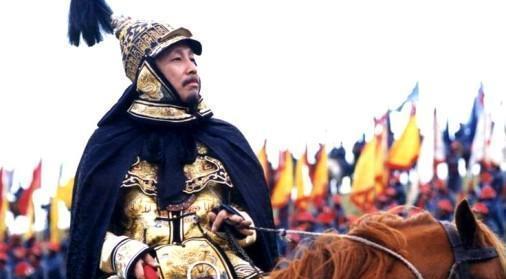Kangxi was the most famous emperor in the history of the Qing Dynasty. During his reign, he quelled the Rebellion of San Francisco, recovered Taiwan and the Penghu Archipelago, repelled the invasion of Tsarist Russia, and opened the kangqian dynasty, and was the most talented and ambitious emperor of the Qing Dynasty. Even if you look at the entire history of ancient China, Kangxi can be called an emperor throughout the ages.

Kangxi not only had great political achievements, but also was a particularly science-loving emperor in Chinese history. In particular, Kangxi played a major role in the prevention and control of smallpox virus.
During the Wei and Jin dynasties, smallpox was introduced to China from Southeast Asia, and it was the most vicious of all plagues. Once a person is infected with smallpox virus, it means that he has an incurable disease and a very high mortality rate. Even if you are lucky enough not to die, you will leave a pockmark on your face.
In the early years of the Qing Dynasty, smallpox was rampant in northern China. In Beijing, smallpox is particularly rampant. The Manchus originally had very few people who suffered from this disease outside Guanwai, but after entering the city of Beijing, many Manchus died of smallpox infection, so the Manchu nobles believed that the Han people transmitted smallpox to the Manchus. Therefore, during the regency of Dorgon, all Han Chinese who had smallpox were expelled from the capital twenty miles away.
Despite the strict precautions taken by the Qing rulers, Dolgun's brother Duoduo the Prince of De, the two Fujins of the British Prince Azig, the Empress Xiaoduan, the Empress Xiaohui, and even the Shunzhi Emperor himself unfortunately contracted smallpox and died.
In order to avoid teasing, after Kangxi was born, he was carried out of the Forbidden City by his nursing mother and raised. Even so, Kangxi was infected with smallpox when he was two years old. Fortunately, under the meticulous care of the nursing mother, Kangxi escaped from the hands of the god of death.
When the Shunzhi Emperor died of smallpox, he considered the question of heirs. The eldest son of the Shunzhi Emperor had already died of smallpox, and the Shunzhi Emperor wanted to make his second son Fuquan the crown prince, while Empress Xiaozhuang wanted to make the emperor's third son Xuan Ye the crown prince. The Shunzhi Emperor and Empress Xiaozhuang were at a stalemate, so they asked John Tang, a Western missionary who was on an errand in the palace at the time, to arbitrate. John Tang suggested that Li Xuanye be crown prince, because he had smallpox and was immune to the disease for life.
After Kangxi succeeded to the throne, he realized the threat of smallpox to the Qing Dynasty and was determined to find a way to defeat smallpox. In fact, during the Tang and Song dynasties, China had a "human pox vaccination method", that is, the pus in the pox of smallpox patients was applied to people who were not infected with smallpox, so that uninfected people could produce antibodies, similar to today's vaccination.
However, due to the limitations of medical knowledge and conditions at that time, the amount of vaccination was difficult to control. Less the amount can not be effective, the amount is more and easy to infect the disease, so the human pox vaccination method is used less.
In the seventeenth year of the Kangxi Dynasty (1678), the crown prince Yin Rong had a pox. When another French missionary named John Hung came to Beijing, China, he suggested to Kangxi that Western clinical experiments be used to test the reliability of Chinese vaccination.
At Hong Ruohan's request, the Kangxi Emperor recruited thirty palace ladies who voluntarily accepted the experiment in the palace. The women must be under the age of 16, in good health and have never had smallpox.
Kangxi unified these tested palace women together and let the palace women and eunuchs who had suffered from smallpox serve them. Hong Ruohan used a syringe to remove the pus from the acne and then inoculated the thirty palace women one by one. A month later, four of the thirty palace ladies unfortunately contracted smallpox and died, and four of the remaining twenty-six survived, although they were also infected with smallpox.
Since then, Kangxi has repeatedly recruited palace personnel of different ages and genders for experiments, and finally controlled the success rate of vaccination to about 96%. Since then, the Qing dynasty royal family has never been invaded by the smallpox virus, and the crown prince Yin Rong has also survived the smallpox virus.
This advanced pox vaccine method was not only implemented by Kangxi in the Qing Dynasty court, but also widely promoted in the Eight Banners, and even extended to southern and northern Mongolia. Under the vigorous promotion of the Kangxi Emperor, the incidence of smallpox was effectively controlled, saving millions of ordinary people. Kangxi's human experiment data is very precious and has played a great role in the medical research of later generations.
Today, smallpox viruses are extinct in human society, and virus samples are only stored in two laboratories in the United States and Russia for medical research.